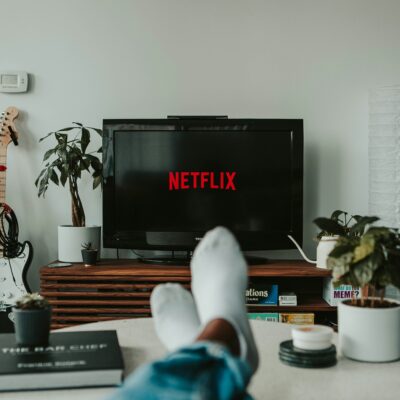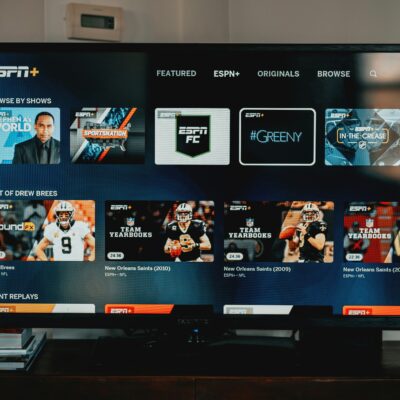Are you tired of flipping through channels on traditional cable TV, only to find nothing worth watching? Or maybe you’re hooked on the convenience and endless options offered by streaming services like Netflix and Hulu. The battle between traditional cable TV and streaming services has been heating up, causing a seismic shift in the way we consume television content. In this blog post, we will explore the impact of streaming services on traditional cable TV, unraveling the advantages and disadvantages of each option while delving into how these changes have revolutionized the TV industry as we know it. So grab your remote (or smartphone) and let’s dive in!
Comparison of streaming services and traditional cable TV
Streaming services have revolutionized the way we watch TV, offering on-demand content accessible anytime, anywhere. With platforms like Netflix and Amazon Prime Video, viewers can binge-watch entire seasons in one sitting.
Traditional cable TV, on the other hand, follows a scheduled programming model with set air times for shows. This lack of flexibility can be frustrating for those used to the freedom of streaming services.
Another key difference lies in pricing – while cable packages often come with bundled channels at a higher cost, streaming services offer more affordable subscription options tailored to individual preferences.
Moreover, streaming services provide original content that rivals traditional network productions. The ability to cater to niche audiences has allowed them to push creative boundaries and experiment with storytelling in ways that traditional TV cannot always match.
Advantages and disadvantages of each option
When it comes to comparing streaming services and traditional cable TV, each option has its own set of advantages and disadvantages.
Streaming services offer the convenience of watching content anytime, anywhere, on multiple devices. With a wide range of shows and movies available at your fingertips, you can binge-watch your favorite series without being tied to a fixed schedule.
On the other hand, traditional cable TV provides a sense of familiarity with channel surfing and live programming. It offers access to local news and sports channels that may not be readily available on streaming platforms.
One disadvantage of streaming services is the need for a stable internet connection. Buffering issues or slow loading times can be frustrating when trying to enjoy uninterrupted viewing.
In contrast, cable TV packages often come with higher costs due to additional fees for premium channels or equipment rentals. Additionally, long-term contracts may limit flexibility compared to the month-to-month subscriptions offered by many streaming services.
How streaming services have affected the TV industry
The rise of streaming services has revolutionized the TV industry in ways that were once unimaginable. Traditional cable TV providers are facing stiff competition as more and more viewers opt for the convenience and flexibility offered by platforms like Netflix, Hulu, and Amazon Prime Video.
Consumers now have access to a vast library of content at their fingertips, allowing them to binge-watch entire series or discover new shows tailored to their preferences. This shift in viewing habits has forced networks to adapt by investing in original programming to stay relevant in an increasingly crowded market.
Streaming services have also led to a decline in traditional advertising revenue for cable networks, as many viewers prefer ad-free subscription models. As a result, advertisers are turning towards digital platforms to reach their target audiences effectively.
The impact of streaming services on the TV industry continues to reshape how we consume entertainment, challenging established norms and paving the way for a more personalized viewing experience.
The changing viewing habits of consumers
With the rise of streaming services, consumers are no longer tied to traditional TV schedules. They now have the freedom to watch their favorite shows and movies anytime, anywhere. This shift has led to a decrease in appointment viewing, where viewers would tune in at specific times for live broadcasts.
Binge-watching has become a popular trend, with viewers consuming entire seasons of shows in one sitting. This on-demand model caters to people’s desire for instant gratification and control over their entertainment choices.
Moreover, mobile devices have revolutionized how we consume content. People can now watch videos on smartphones and tablets while on the go, making it easier than ever to stay connected to their favorite shows.
As consumers continue to embrace streaming platforms for their convenience and variety of content options, traditional cable TV providers are facing challenges in retaining subscribers. The landscape of television consumption is evolving rapidly as more individuals opt for personalized viewing experiences tailored to their preferences.
Predictions for the future of cable TV in a streaming-dominated market
As streaming services continue to dominate the TV industry, traditional cable TV is facing a challenging future. Consumers are increasingly turning to streaming platforms for their entertainment needs due to the convenience, flexibility, and cost-effectiveness they offer. The rise of original content on streaming services has also played a significant role in shifting viewers away from cable TV.
Looking ahead, it is likely that cable TV will need to adapt rapidly to keep up with the changing landscape. We can expect to see more partnerships between cable providers and streaming services in an attempt to retain customers. Cable companies may also need to explore offering more customizable packages at competitive prices to appeal to modern consumers who prefer on-demand content.
While the future of cable TV may be uncertain in a world dominated by streaming services, one thing is clear – adaptation and innovation will be key for traditional providers looking to survive in this evolving market.





